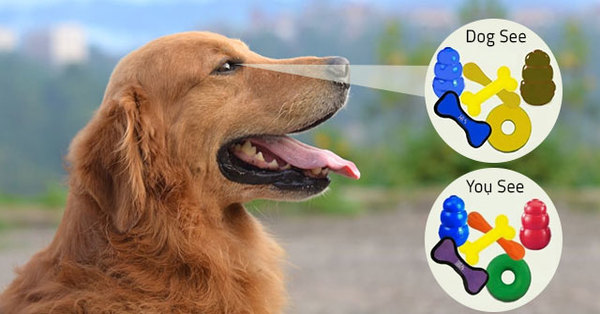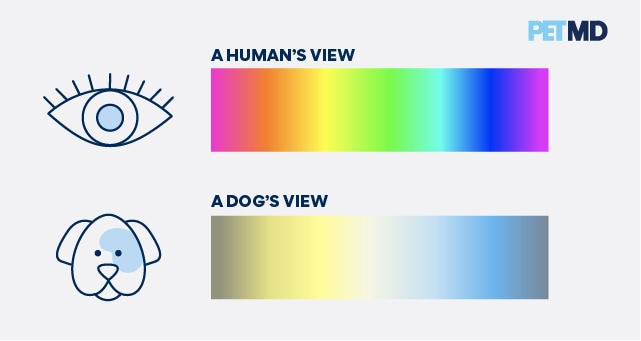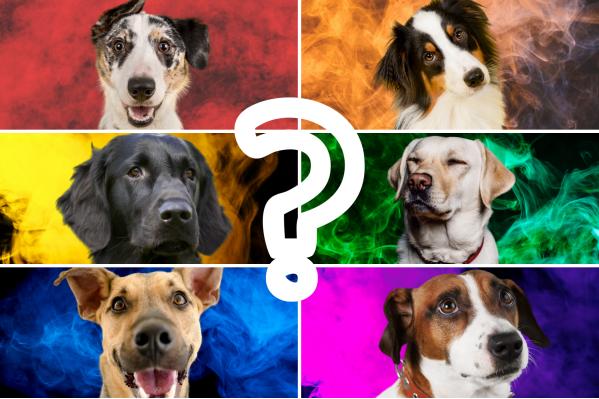
Dogs are an integral part of many people's lives and often have very different views when it comes to colors. This article will throw some light on whether your dog shares your color vision.
You might plan to make colorful dog portraits, but do you know how your dog will see that masterpiece. Dogs perceive colors differently than humans, but they can see a variety of colors just like people. In fact, many breeds of dogs have been bred specifically for their ability to see color. Therefore, some breeds, such as bulldog, are often associated with certain colors.
One study found that dogs can see up to 12 different colors, and some breeds are better at seeing certain colors than others. For example, border collies are particularly good at seeing blue and green, while poodles are better at seeing pink and purple. However, there is no one perfect breed for all colors.
In general, most dogs prefer brighter colors over darker ones, but this doesn't mean that they can't see dark colors. In fact, many working dog breeds – such as Shetland sheepdogs and Australian Cattle dogs – are known for their abilities to see in low light conditions.

Dogs see colors differently than we do, and there is a possibility that this could account for why some dogs see different colors than their owners.
One reason why dogs see color differently than humans is because their eyes are positioned differently in their heads. Dogs have a forward-facing eye located in the middle of their forehead, which gives them a wider range of vision than humans. It means that they can see more details in the color spectrum than we can.
A study by Dr. Elaine Hepper found that dogs see about 10% more colors than humans do, and scientists believe therefore some breeds of dogs are so specialized in certain areas, like herding or hunting.

While it's generally accepted that dogs do have a limited color perception, the extent to which they can distinguish colors varies based on the individual dog and the context in which they are viewing them.
For example, a white cane may look different to a golden retriever than it would to a black lab since each of these animals has its own unique color palette. Similarly, some colors may be more salient to one type of dog than another. While many mixed-breed dogs can see colors well, some may be more sensitive to certain hues (such as blues) than others.
So how do dogs sense colors? It's not entirely clear, but there are likely several factors at play.
One theory suggests that canine vision is based on a wavelength spectrum similar to human sight, meaning that certain colors might stand out more to them due to their similarity in hue.
Others suggest that dogs rely on facial expressions and body language when assessing colors since these signals can often be more reliable indicators of someone's emotional state or intentions.
Many other animals besides humans experience partial color blindness, which is a condition where certain colors are not seen as clearly as others. Pets like dogs can also be afflicted with partial color blindness and may see some colors differently than their human owners. Here are some factors to keep in view if your dog sees different colors than you:
Some dogs see different colors better than others. If your dog seems to see colors more vividly or accurately than you do, it might simply be because they see them in a different way than you do. There's no need to worry, though – most dogs will eventually get used to seeing colors the way you do.

Certain objects and surfaces might appear darker or lighter to a dog with partial color blindness, depending on how brightly they reflect specific colors. This means that some everyday items (like furniture) may look different to your dog depending on the color of the fabric or surface. Just remember that everything will eventually look normal once your dog gets used to seeing colors the way you do.
If your dog seems confused or frustrated when trying to see certain colors, it might be helpful to try mixing up the shades a little bit until they start to become more accustomed.
Dogs can be trained to recognize colors, but this may not be something that you would want your dog to focus on. Dogs are very visual animals, and they are often drawn to things that are colorful. This can make it difficult for them to focus on tasks that require them to recognize colors, such as obedience training or retrieving a ball.
A brilliant way to keep your dog in your memories for generations is to develop furryroyal colorful dog portraits. That portrait can be a family relic and remind everyone of your furry friend. To make colorful custom dog portraits, go to furryroyal.com. You can see several furryroyal dog portraits colorful there and get ideas for your dog too.
There is some genuine debate surrounding whether or not dogs can recognize the same color as us. Some people believe in it, while others find this to be doubtful. So far, studies have shown that dogs do tend to react more positively to colors that are like their own. This could mean that a darker color might be more appealing to dogs than a light color, but again this has yet to be proven conclusively.
Ultimately, the answer to whether or not your dog will respond positively to the same color as you largely depend on his personality and how much exposure he has had to different colors in his lifetime.













 Facebook
Facebook Twitter
Twitter


